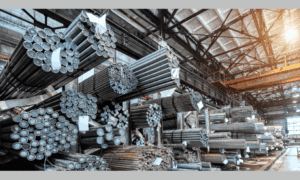AI-powered automation is transforming maintenance management, especially in industries relying on complex systems and equipment. By integrating AI into work order management systems, businesses can improve efficiency, reduce downtime, and enhance asset performance.
This article explores how AI-driven tools such as predictive maintenance software, CMMS systems, and work order tracking systems are revolutionizing maintenance practices.
The Role of AI in Maintenance Management
AI is reshaping how businesses manage their maintenance tasks. AI-powered maintenance software is integrated into work order management software systems to enable predictive and preventive maintenance approaches. Unlike traditional methods, these systems use real-time data and machine learning to forecast failures and optimize workflows, ensuring that work orders are prioritized based on actual equipment needs.
How AI Optimizes Work Order Software
AI’s integration in work order software streamlines task assignment, scheduling, and tracking. It automates routine processes, reducing the need for manual intervention and enabling maintenance teams to focus on more critical tasks. Additionally, it offers predictive insights into potential issues, thus minimizing unplanned downtime.
Key Benefits of AI-Powered Maintenance Solutions
Predictive Maintenance to Reduce Downtime
AI-based predictive maintenance software helps businesses reduce downtime by predicting equipment failure before it occurs. By analyzing historical and real-time data, AI identifies patterns that can signal potential malfunctions. This proactive approach helps businesses take preventive action, minimizing unscheduled downtime and lowering repair costs.
Enhanced Task Automation and Scheduling
One of the standout features of AI in maintenance management is maintenance task automation. With AI, routine maintenance tasks such as inspections and equipment calibration are scheduled automatically, based on equipment data. AI-powered solutions ensure that tasks are completed at optimal intervals, reducing manual oversight and increasing task accuracy.
Work Order Tracking: Improving Efficiency with AI
AI-enhanced work order tracking systems provide maintenance teams with real-time visibility into the status of all maintenance requests. Managers can quickly identify which tasks are completed, pending, or require urgent attention. These systems automatically update work order statuses, helping to reduce errors and ensuring no task is overlooked.
Additionally, AI-driven maintenance software sends instant alerts for any detected anomalies, notifying the relevant team members right away. This ensures that maintenance teams can act quickly, preventing downtime and addressing issues before they escalate.
The Role of AI in Building Maintenance
- Building Maintenance Importance: AI-driven software enhances asset management by providing real-time monitoring and predictive insights for building systems like HVAC, electrical, and plumbing.
- Predictive Analytics: AI continuously analyzes performance data to forecast potential system failures.
- Proactive Maintenance: Based on AI predictions, maintenance work orders are generated proactively, allowing teams to focus on prevention rather than reactive repairs.
How to Choose the Best Work Order Software
To ensure seamless integration of AI into your maintenance operations, it’s crucial to evaluate various work order software options based on your business needs. When selecting the right solution, you should focus on key factors such as integration capabilities, predictive analytics, ease of use, and real-time reporting. These features will help streamline workflows, automate tasks, and improve overall efficiency in work order management.
Selecting the Right AI Work Order Management System
When evaluating AI-powered work order software, several factors need to be considered to ensure it meets your business’s needs. Here are some key considerations:
- Ease of Integration: The software should integrate seamlessly with your existing infrastructure, including asset management systems and building management software.
- Predictive Analytics: Look for AI solutions that can predict equipment failures and generate maintenance work orders based on data analysis.
- Task Automation: Choose software that automates routine tasks such as scheduling preventive maintenance and generating reports.
- Real-Time Reporting and Alerts: The software should offer real-time updates and notifications about work orders and asset conditions.
By considering these features, businesses can select the most effective AI-powered maintenance management software to streamline their operations and improve asset performance.
AI and Facility Management: A Comprehensive Solution
AI-powered facility management software goes beyond work order management by providing a holistic view of all maintenance tasks, from scheduled inspections to urgent repairs.
The software can track assets, monitor system performance, and automate work orders, ensuring a smooth workflow for maintenance teams. This integration helps facility managers handle all aspects of building maintenance, from HVAC systems to electrical work, with minimal effort.
The Future of AI in Maintenance Management
As AI continues to evolve, the future of maintenance management looks even more promising. The next generation of AI-driven tools will incorporate advanced machine learning algorithms to provide deeper insights and more accurate predictions. AI will continue to enhance predictive maintenance, making it even more precise in forecasting failures and extending the lifespan of equipment.
Furthermore, AI technology will likely incorporate more IoT capabilities, allowing real-time tracking and automation of not only maintenance but also energy usage and other facility management tasks.
Frequently Asked Questions
- What is predictive maintenance software, and how does it reduce downtime?
Predictive maintenance software uses AI and real-time data analysis to forecast when equipment is likely to fail. By predicting failures in advance, businesses can schedule maintenance ahead of time, reducing unplanned downtime and costly repairs.
- How can AI-driven work order software automate maintenance tasks?
AI-driven work order software automates routine tasks by analyzing data from equipment and systems. It can schedule preventive maintenance, generate work orders automatically, and notify maintenance teams about urgent issues, reducing manual input and improving efficiency.
- How does AI impact facility management?
AI in facility management allows businesses to monitor assets in real-time, predict potential failures, and schedule maintenance tasks automatically. It also helps streamline work order tracking, reducing human errors and ensuring that all tasks are completed on time.
Conclusion
AI-powered automation is transforming maintenance management by providing businesses with smarter, more efficient solutions for work order management, asset tracking, and predictive maintenance.
By integrating AI-driven tools like predictive maintenance software, CMMS systems, and work order tracking systems, businesses can reduce downtime, extend equipment lifespans, and improve operational efficiency. As AI technology advances, maintenance management will continue to evolve, offering even greater benefits in the years to come.


































